2015-2016 University Catalog
Art and Visual Technology, BFA
|
|
Banner Code: AR-BFA-AVT
Art and Design Building, Room 2050
Phone: 703-993-8898
Web: soa.gmu.edu/
Faculty
Peter Winant, Director
Professors: Ashcraft, Carbonneau, Frederick, Kravitz, Linton, White
Associate Professors: Cooley, Crawford, Cui, Endress, Feerick, Frenn, Karametou, Rothstein, Sheridan, Winant (director), Wrbican (associate director)
Assistant Professors: Constantine, Debuque, Del Popolo, Stanley, Starr
Adjunct Faculty: Benassi, Bisese, Booth, Bourke, Bradley, Brugnoli-Whipkey, Carr, Cheney, Cushner, Dixon, Grainger, Guerrieri, Hankin, Hicks, Isham, Kenney, Mayhew, McCoy, Petrine, Quinones, Rodriguez, Salyards, Skowron, Watson
Mission
George Mason University’s School of Art is a collaborative academic and professional community focused on advancing creativity through traditional and new media applied to varying social contexts. The School of art is founded on the premise that art both reflects and inspires a creative society, improving the human condition while describing the world, both as it is and could be. We focus on the role of artists in that conversation. We encourage students to see art both as an individual expression and public interaction. We celebrate historical reference, current relevance and experimentation-emphasizing innovative ways of thinking that enhance the impact of art on the future of society.
Embedded in a major liberal arts university rich in learning resources, the School of Art plays a vital role in the creative climate of the institution and the region through the cross-disciplinary research it facilitates and the artwork it produces and exhibits. The School’s facilities engage an exceptional faculty of practicing artists, an active visiting artist program, and a diverse and intellectually curious graduate and undergraduate student body. Artistic skills and principles of creative practice in all visual media are grounded in a forward-thinking, adaptive curriculum. Faculty and students forge cross-disciplinary experimentation, challenging conventional thinking and blurring the lines between traditional artistic disciplines, indeed, between the arts and other humanities and sciences.
The School of Art educates artists and creative professionals to be responsible contributors to society, preparing them to be agents of change in an increasingly connected, complex, inclusive world. We highly value rigor in conceptual approach, skill in art production, and imaginative methods for implementing projects and engaging audiences. Each student is given a background in aesthetic and analytical judgment, the ethical framework for professional practice, the confidence to be both self-reliant and collaborative, and the mastery of design and production necessary to thrive as a professional artist in a competitive global environment.
Courses
The School of Art offers all courses designated AVT in the Courses section of this catalog.
Undergraduate Programs
Undergraduate studio degrees offered by the School of Art include the bachelor of arts (BA) and the bachelor of fine arts (BFA), and an honors program for selected AVT majors. The school also offers several undergraduate minors and an honors program for selected AVT majors.
The BA program does not satisfy all requirements for those seeking accreditation for teaching in the public schools. Undergraduate students interested in this field should contact the school’s art education advisor to learn more about teacher preparation.
Undergraduate Admission to the School of Art
Students are admitted to School of Art degree programs separately from their admission to George Mason University and only by portfolio review. The College of Visual and Performing Arts strongly encourages students to apply to the university by November 1 in order to receive maximum scholarship consideration, including merit and talent-based scholarships.
How to Apply to the School of Art
- Apply to George Mason University. Admission to George Mason is determined by the Admissions Office and is separate from admission to the School of Art degree programs. All School of Art applicants are encouraged to apply for admission to the university prior to submitting a portfolio for review.
- Successfully complete a portfolio review. Please refer to the Portfolio Review Criteria below.
Scheduling a Portfolio Review
To schedule a Portfolio Review, please visit our online scheduling site (avt.acuityscheduling.com). Applicants who live more than 125 miles form George Mason University’s Fairfax campus may submit digital portfolios. Face-to-face reviews are preferred. Only in extreme circumstances are exceptions made at the discretion of the Director.
During the portfolio review session, a faculty member will assess your work, provide constructive criticism, and give you a sense of your strengths, and where your work stands relative to your peers. Faculty can also answer specific questions and offer guidance towards the programs offered in the School of Art.
Portfolio Review Process
Freshmen Students:
Incoming freshmen may request a portfolio review prior to acceptance to the university, but it is not required before their applications are complete. However, all freshmen are required to have a portfolio review within one semester of taking their first studio art course at Mason, and cannot be formally accepted into School of Art degree programs until the portfolio review is complete. Portfolio reviews must be submitted by November 1 to be considered for scholarships.
Transfer Students:
All transfer students who intend to become candidates for a BA or BFA in the School of Art must complete a portfolio review as a part of their general application to the university. As a reminder, transfer students are required to submit official transcripts of all college-level coursework.
Portfolio Criteria
For all BA and BFA candidates, consideration for admission is competitive and requires the following:
- One-page, double-spaced essay that describes the candidate’s interest in a studio art degree
- 3.00 cumulative GPA overall
- Portfolio of 10 to 15 original examples of current or college level work
For Students who are accepted into the BA and want to declare the BFA:
For current Mason students in the School of Art BA program who wish to change to the BFA program application deadlines are at the end of the sixth week of the fall and spring semester each year by 5pm. Students MUST receive at least one critique by a full-time AVT faculty member in their concentration prior to submitting their portfolio.
Your application must include:
- Your completed application form,
- A two-page artist’s statement explaining why you want to pursue a BFA and what you intend to do as an artist,
- Your portfolio including 10-15 examples of college level work (over 2/3rds of your work must be concentration specific),
- A numbered and printed list of work submitted (including your name, title of work, medium, and size).
Full-time AVT faculty in the student’s concentraton area will review submitted portfolios. Applicants will be notified via their Mason email accounts of the results of the review.
Artsbus Requirement
All AVT majors must meet the school’s requirement of travel to galleries and museums through the Artsbus program. Students meet this requirement by enrolling in AVT 300 - Artsbus Attendance. The procedure and requirements for enrollment in AVT 300 are the same as for any other class.
Freshmen who enroll as AVT majors must accumulate five AVT 300 credits during their course of study. Transfer students and students who change their majors to AVT must take AVT 300 for the equivalent of each semester they are enrolled at Mason, up to a maximum of five semesters. Semesters of enrollment in AVT 300 do not have to be consecutive. Students may take AVT 300 up to three times in a semester if they wish to accelerate their completion of the requirement although this is strongly discouraged.
All rules and requirements to AVT 300/Artsbus participation are posted on the Artsbus web site: http://artsbus.gmu.edu. Students are responsible for being familiar with and following the posted rules and requirements for Artsbus. The site also provides pertinent information for each trip regarding exhibits as well as reviews and articles for exhibitions.
Visual Voices Requirement
All AVT majors must fulfill three credits of AVT 301 - Visual Voices Colloquium, in order to graduate unless they are enrolled at Mason for fewer than three semesters. If enrolled for less than three semesters, students are required to have one AVT 301 credit per semester in which they are enrolled. Visual Voices is an intrinsic part of the major, offering students a chance to meet with and hear nationally and internationally recognized artists speak about their work. The procedure and requirements for enrollment in AVT 301 are the same as for any other class.
Writing-Intensive Requirement
Mason requires all students to complete at least one course designated “writing intensive” in their majors at the 300 level or above. AVT students fulfill this requirement by successfully completing AVT 395.
Upper-Level Credits
All undergraduate students are required to complete a minimum of 45 credits of upper-division courses at the 300–499 level.
Major GPA
All School of Art undergraduate students must earn a minimum 2.00 cumulative GPA in their major. Additionally, students must earn a grade of C or better in required AVT course work, including Studio Foundation, Critical Analysis and Contemporary Practice, Breadth and Experience, Synthesis and Concentrations. To graduate with a BA or BFA in Art and Visual Technology with a concentration in Graphic Design, students are required to maintain a 2.40 GPA in concentration classes. Students who fail to maintain this minimum may either retake core classes (an earned higher grade replaces the old one) or take concentration special topics classes in order to raise their average to the threshold. The effect of this change will be that very weak students will have to return to required classes to master core skills, and marginally weak students will be able to meet the requirement while expanding the breadth of their education.
Studios
The School of Art program is located in the Art and Design Building which houses well-equipped studios for drawing, painting, photography, printmaking, and sculpture, as well as six computer-equipped studios that cross platforms and are installed with current software applications used for two dimensional imaging, three-dimensional modeling, animation, video production, sound editing, multimedia authoring, photography, and web publishing.
Policies, procedures, and schedules for studio use are established by the SOA studio faculty and are posted in the studios.
School of Art Honors Program
Students interested in the Honors Program in School of Art should contact the director of the school. Both BA and BFA students are eligible to apply for admission to the program. Honors students must complete at least 4 credits of AVT 394 - Honors Seminar. They must have a cumulative GPA of at least 3.00 and at least 3.50 in AVT 394 and the AVT major.
Academic Policies
Please see College of Visual and Performing Arts academic policies.
MAT Degree in Art Education
Students intending to pursue the MAT degree in Art Education after their undergraduate studies have slightly different degree requirements for the BFA. See below for full course listings.
|

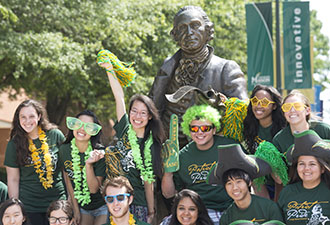
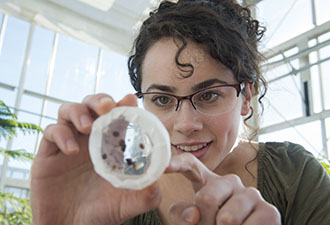
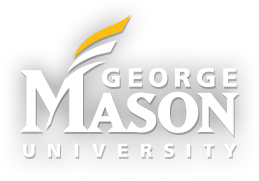
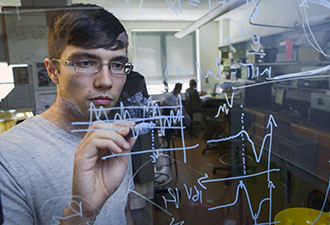
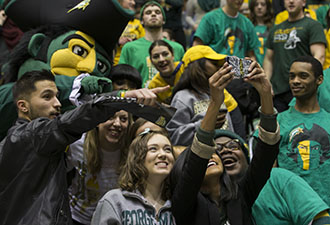
 Print-Friendly Page
Print-Friendly Page